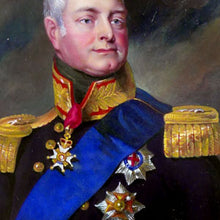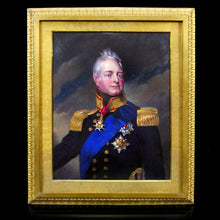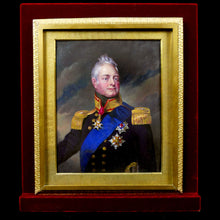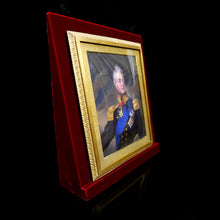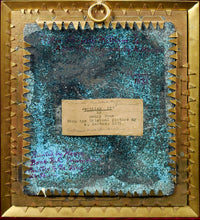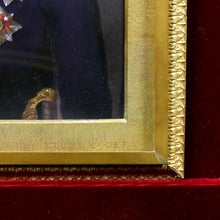Portrait Miniature of King William IV - Henry Bone RA, 1830
- Regular price
- £12,500
- Sale price
- £12,500
- Regular price
-
- Unit price
- /per
Adding product to your cart
Overall: 23.8 (in) x 20.1cm (in)
Provenance: Private Collection, UK
Portrait of William IV (reigned 1830-37), half-length in Admiral of the Fleet's uniform with the sash and star of the Order of the Garter and the Sovereign's neck badge and star of the Order of the Bath. Inscribed verso 'Painted by Henry/ Bone R.A. Enamel/ Painter to the King/ ***’. Enamel: 19cm (7.5in) x 15.2cm (6in). Contained in original period glazed ormolu frame.
The present work is derived from a full-length portrait by Andrew Morton (1802-1845) and Sir Thomas Lawrence (1769-1830), that was exhibited at the Royal Academy in 1830 and is now exhibited in the Royal Marines Museum, Hampshire.
Read more
Interestingly a pencil and watercolour portrait of William IV by Henry Bone in the Royal Collection bears an accompanying label noting that 'this drawing from Life (of William IV) was done by H. Bone by order of Queen Victoria for an enamel’. A resulting head and shoulders enamel portrait is probably the one first recorded in the Royal Collection during the reign of King Edward VII (1901-1910) . Queen Victoria (1819-1901) would have been very young at the time the portrait was commissioned from Bone and suffering under the harsh regime of the ‘Kensington System’ by which her mother and the infamous Sir John Conroy consorted to crush her to their will. It is telling of perhaps of the relationship between the ailing William IV, who was determined to survive long enough to avoid another regency, and the young princess’s struggle to resist Conroy and her mother’s ambitions to rule over her before ascending the throne.
Henry Bone RA (1755-1834) was the son of a Cornish cabinet-make. He was born in Truro and came to London 1779 and began to work as a miniature painter, at first painting in watercolour on ivory but working exclusively in enamel from 1803 onwards. After his appointment as Enamel Painter to George, Prince of Wales (later George IV) in 1801 he began to paint a series of large-scale enamel copies of mythological and religious paintings by Reynolds and the Old Masters which were elaborately framed and hung in the Prince of Wales's Private Bedroom at Carlton House. They survive as the most ambitious works of their type ever produced using the enamel technique. He was elected Royal Academician in 1811.
William IV was the third son of George III and the brother of George IV. At the age of thirteen, he became a midshipman in the Royal Navy. In 1789, he was made Duke of Clarence. He retired from the Navy in 1790. Between 1791 and 1811 he lived with his mistress, the actress Mrs Jordan, and the growing family of their children known as the Fitzclarences. William married Princess Adelaide of Saxe-Meiningen in 1818, but their children died in infancy. William became heir presumptive at the age of 61, when his second brother, Frederick, Duke of York, died in January 1827. William's reign (1830-37) was dominated by the Reform crisis, beginning almost immediately when the Duke of Wellington's Tory government (which William supported) lost the general election in August 1830. Pledged to parliamentary reform, Earl Grey's Whig government won a further election which William had to call in 1831 and then pushed through a reform bill against the opposition of the Tories and the House of Lords, using the threat of the creation of 50 or more peers to do so. The failure of the Tories to form an alternative government in 1832 meant that William had to sign the Great Reform Bill. Control of peerages had been used as a party weapon, and the royal prerogative had been damaged.

The Reform Bill abolished some of the worst abuses of the electoral system (for example, representation for so called 'rotten boroughs', which had long ceased to be of any importance, was stopped, and new industrial towns obtained representation). The Reform Act also introduced standardised rules for the franchise (different boroughs had previously had varying franchise rules) and, by extending the franchise to the middle classes, greatly increased the role of public opinion in the political process. William understood the theory of the more limited monarchy, once saying 'I have my view of things, and I tell them to my ministers. If they do not adopt them, I cannot help it. I have done my duty.’ William died on 20 June 1837, only a month after his niece, Victoria, had come of age, thus avoiding another regency.







